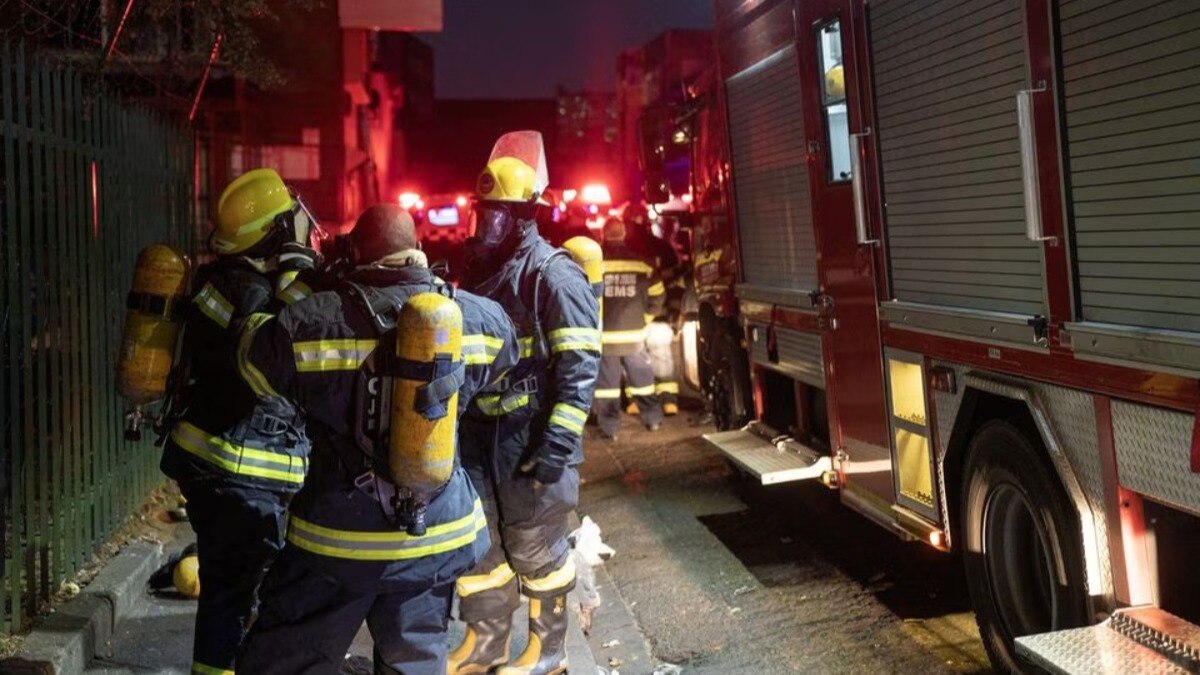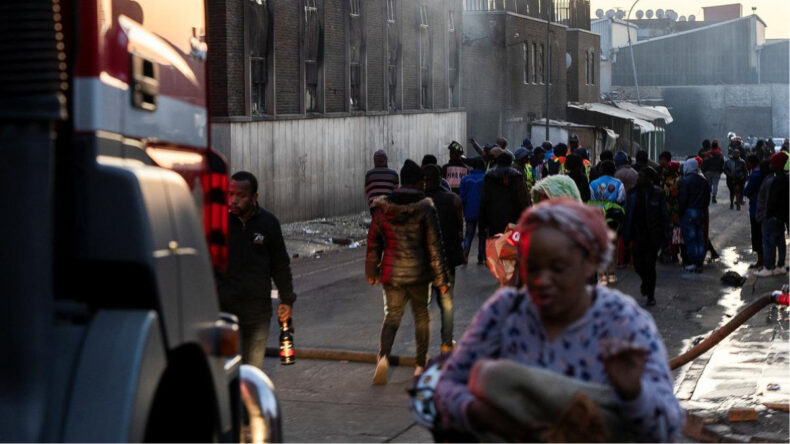A fire blasted through a five-story structure in central Johannesburg that held “hundreds” of informal settlements, leaving at least 73 people dead and scores more injured.
Authorities claimed that they searched the building floor by floor for survivors while also removing burned dead and placing them out on the streets. According to the local media, children are reportedly suspected to have been killed.
The fire has finally been put out, according to rescue personnel.
According to Robert Mulaudzi, a representative for the city’s emergency services, more than 50 people were hurt in addition to the fatalities.
Videos captured only moments after the fire started show a building’s lower story being consumed by enormous orange flames while a large crowd is outside.
Onlookers gathered around burned-out and cordoned-off portions, broken glass windows, and clothing scattered throughout the structure on Thursday morning.
Authorities at the scene could not find any evidence of intentionality, while the source of the fire is still unknown. Around 1:30 a.m. local time, the fire started, while most occupants were sound asleep.

Hijacked buildings of Johannesburg
Mulaudzi claimed that it happened within a “hijacked” building in the heart of Johannesburg, claiming that there were “hundreds” of communities there.
Buildings that have been “hijacked” are those that have been abandoned by landlords, taken over by gangs or other groups, and then leased out mostly to immigrants and South Africans who lack the financial means to pay for other types of housing. These buildings can be observed in various areas of downtown Johannesburg.
Frequently, this type of dwelling does not adhere to minimal safety standards. The apartments in the building, which were originally meant to house two or three people, were divided into sleeping quarters to accommodate many people, according to local authorities who responded to the scene, who described the structure as resembling an informal colony.
In South Africa, “hijacked buildings” have been condemned, and rules have been attempted. Some South Africans have criticized the authorities for doing nothing to address the issue.

The Fire
According to Robert Mulaudzi, a spokeswoman for Johannesburg Emergency Management, the fire, whose cause was under investigation, began at 1:30 in the morning local time.
A Reuters reporter reported that when rescue personnel gathered around the five-story building at 10 am and people were lying covered in blankets on a neighboring street, it was still smoking and had a substantial portion of its outside covered by soot.
Colleen Makhubele, the speaker for the municipal administration, hinted that everyone inside had been doing so illegally and that the city had attempted but had failed to expel squatters from such structures.
According to her, they were at fault for “not heeding the call of the city to do the right thing…,” she told South Africa’s official television.
“Things like this occur because the citizens are not willing to understand and collaborate with us in upholding the laws and bylaws of the city, in understanding what is safe and what is not safe,” the mayor said.
Makhubele declined to substantiate a claim made by local media outlet News24 that the burning structure was abandoned and had been occupied clandestinely.
Johannesburg is one of the most unequal cities in the world, with high rates of poverty, unemployment, and housing shortages.
According to the provincial administration of Gauteng, which encompasses South Africa’s largest metropolis, there are approximately 15,000 homeless individuals there. There are frequent fires. It frequently has power outages, which force many residents to use candles and wood fires for heat and lighting.













